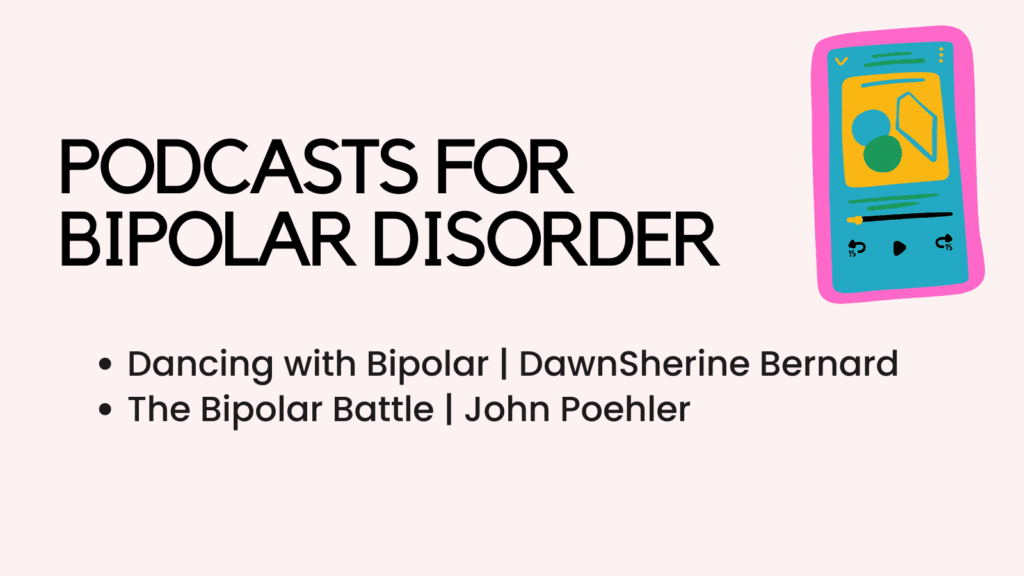Distinguishing between Bipolar Disorder and Depression can be challenging, as both conditions share similar symptoms, particularly during depressive episodes.
Understanding the differences is crucial for appropriate treatment. Here are five signs that your depression might actually be Bipolar Disorder.
5 Signs Your Depression Might Actually Be Bipolar Disorder
1. Early Onset of Depressive Episodes
One of the key indicators that your depression might be part of Bipolar Disorder is the age at which your first depressive episode occurs.
For Bipolar Disorder, the average age of onset is between 15 and 20 years old. In contrast, unipolar depression (depression without mania) typically begins later, between 30 and 40 years old.
While it’s possible to experience depression as a child and not have another episode until later in life, Bipolar Disorder often starts showing symptoms during the late teen years.
2. Poor Response to Antidepressants
Another sign that your depression might be Bipolar Disorder is how you respond to antidepressants.
If antidepressants don’t improve your symptoms or if they make you feel worse—causing anxiety, agitation, or a sensation described as “wired but tired”—it might indicate Bipolar Disorder.
Additionally, you might have initially responded well to antidepressants, but over time, they become less effective.
This could be a sign that your bipolar symptoms are becoming more evident.
Related: DBT For Bipolar: How To Self-Manage Bipolar Disorder Using Dialectical Behavior Therapy (DBT)?
3. Family History of Bipolar Disorder
A family history of Bipolar Disorder, particularly among first-degree relatives like parents or siblings, can be a significant indicator.
If you have a parent or sibling with Bipolar Disorder, your risk of having the condition is higher.
While this doesn’t guarantee you have Bipolar Disorder, it’s an important factor to consider.
4. Frequent Depressive Episodes
Experiencing three or more depressive episodes within a five-year period is another sign that you might have Bipolar Disorder.
Bipolar Disorder tends to be cyclical, with mood episodes recurring regularly.
In contrast, unipolar depression might involve fewer episodes spread out over time unless it’s part of another condition like seasonal affective disorder.
Frequent depressive episodes, particularly if they follow a pattern, suggest a bipolar spectrum illness.
Related: Resources For Bipolar Disorder (Information, APPS, Podcasts, Books)
Hypomania: The Overlooked Episodes
Hypomanic episodes, which are less severe than manic episodes, can often go unnoticed.
Hypomania doesn’t cause significant impairment, and you might simply feel exceptionally good, energetic, and productive.
These episodes can be easily overlooked or mistaken for normal mood variations, especially if the focus has been primarily on depressive episodes.
5. Positive Response to Mood Stabilizers
If you take a mood stabilizer and experience a full recovery within a month, it could indicate Bipolar Disorder.
Mood stabilizers are used to treat mood disorders, and a positive response might suggest an underlying bipolar condition.
However, mood stabilizers are sometimes used as an add-on treatment for treatment-resistant depression, so this sign alone isn’t definitive.
Related: Best 10 Bipolar Books
Why It Matters
The treatment for Bipolar Disorder differs significantly from that for unipolar depression.
Misdiagnosing Bipolar Disorder as depression can lead to ineffective treatment and potentially worsening symptoms.
For instance, some people with Bipolar Disorder may do worse on antidepressants alone, which can trigger manic or mixed states.
Proper treatment for Bipolar Disorder often involves mood stabilizers, either alone or in combination with antidepressants.
Bipolar Disorder According to DSM-5-TR
Bipolar Disorder, as described in the DSM-5-TR (Diagnostic and Statistical Manual of Mental Disorders, Fifth Edition, Text Revision), is a mental health condition characterized by significant mood swings, including manic or hypomanic episodes and depressive episodes.
This disorder is categorized into several types, primarily Bipolar I Disorder, Bipolar II Disorder, and Cyclothymic Disorder.
Below is an overview of these types, their diagnostic criteria, and key features.
Bipolar I Disorder
Diagnostic Criteria:
1. Manic Episode: A distinct period of abnormally and persistently elevated, expansive, or irritable mood and increased goal-directed activity or energy lasting at least one week and present most of the day, nearly every day (or any duration if hospitalization is necessary).
– During this period, three (or more) of the following symptoms (four if the mood is only irritable) are present to a significant degree and represent a noticeable change from usual behavior:
– Inflated self-esteem or grandiosity
– Decreased need for sleep (e.g., feels rested after only three hours of sleep)
– More talkative than usual or pressure to keep talking
– Flight of ideas or subjective experience that thoughts are racing
– Distractibility (i.e., attention too easily drawn to unimportant or irrelevant external stimuli)
– Increase in goal-directed activity (either socially, at work or school, or sexually) or psychomotor agitation
– Excessive involvement in activities that have a high potential for painful consequences (e.g., engaging in unrestrained buying sprees, sexual indiscretions, or foolish business investments)
2. Major Depressive Episode: Five (or more) of the following symptoms have been present during the same two-week period and represent a change from previous functioning; at least one of the symptoms is either (1) depressed mood or (2) loss of interest or pleasure:
– Depressed mood most of the day, nearly every day, as indicated by either subjective report or observation made by others.
– Markedly diminished interest or pleasure in all, or almost all, activities most of the day, nearly every day.
– Significant weight loss when not dieting or weight gain, or decrease or increase in appetite nearly every day.
– Insomnia or hypersomnia nearly every day.
– Psychomotor agitation or retardation nearly every day.
– Fatigue or loss of energy nearly every day.
– Feelings of worthlessness or excessive or inappropriate guilt nearly every day.
– Diminished ability to think or concentrate, or indecisiveness, nearly every day.
– Recurrent thoughts of death, recurrent suicidal ideation without a specific plan, or a suicide attempt or a specific plan for committing suicide.
Key Features:
– The occurrence of the manic and major depressive episodes is not better explained by schizoaffective disorder, schizophrenia, schizophreniform disorder, delusional disorder, or other specified or unspecified schizophrenia spectrum and other psychotic disorders.
Bipolar II Disorder
Diagnostic Criteria:
1. Hypomanic Episode: A distinct period of abnormally and persistently elevated, expansive, or irritable mood and abnormally and persistently increased activity or energy, lasting at least four consecutive days and present most of the day, nearly every day.
– During this period, three (or more) of the following symptoms (four if the mood is only irritable) have persisted, represent a noticeable change from usual behavior, and have been present to a significant degree:
– Inflated self-esteem or grandiosity
– Decreased need for sleep (e.g., feels rested after only three hours of sleep)
– More talkative than usual or pressure to keep talking
– Flight of ideas or subjective experience that thoughts are racing
– Distractibility (i.e., attention too easily drawn to unimportant or irrelevant external stimuli)
– Increase in goal-directed activity (either socially, at work or school, or sexually) or psychomotor agitation
– Excessive involvement in activities that have a high potential for painful consequences (e.g., engaging in unrestrained buying sprees, sexual indiscretions, or foolish business investments)
2. Major Depressive Episode: Same criteria as in Bipolar I Disorder.
Key Features:
– There has never been a manic episode.
– The occurrence of the hypomanic episode(s) and major depressive episode(s) is not better explained by schizoaffective disorder, schizophrenia, schizophreniform disorder, delusional disorder, or other specified or unspecified schizophrenia spectrum and other psychotic disorders.
– The symptoms of depression or the unpredictability caused by frequent alternation between periods of depression and hypomania causes clinically significant distress or impairment in social, occupational, or other important areas of functioning.
Cyclothymic Disorder
Diagnostic Criteria:
1. For at least two years (at least one year in children and adolescents), there have been numerous periods with hypomanic symptoms that do not meet criteria for a hypomanic episode and numerous periods with depressive symptoms that do not meet criteria for a major depressive episode.
2. During the above two-year period (one year in children and adolescents), the hypomanic and depressive periods have been present for at least half the time, and the individual has not been without the symptoms for more than two months at a time.
3. Criteria for a major depressive, manic, or hypomanic episode have never been met.
4. The symptoms in Criterion A are not better explained by schizoaffective disorder, schizophrenia, schizophreniform disorder, delusional disorder, or other specified or unspecified schizophrenia spectrum and other psychotic disorders.
5. The symptoms are not attributable to the physiological effects of a substance (e.g., a drug of abuse, a medication) or another medical condition (e.g., hyperthyroidism).
6. The symptoms cause clinically significant distress or impairment in social, occupational, or other important areas of functioning.

How to Manage Bipolar Disorder Through Both Cycles
Bipolar disorder brings intense emotional highs (mania or hypomania) and deep lows (depression). Managing both sides of the cycle requires a strategy that’s steady, flexible, and self-compassionate. Here’s how to navigate both phases.
Managing the Highs (Mania or Hypomania)
1. Stick Closely to Your Routine
When you feel energized and unstoppable, it’s tempting to ditch sleep, meals, or responsibilities. Resist that urge—routine is your anchor.
2. Watch for Early Warning Signs
Notice the small shifts—sleeping less, racing thoughts, impulsive decisions—before full-blown mania hits. Early intervention helps.
3. Slow Yourself Down Intentionally
Use calming activities like slow walks, deep breathing, or gentle music to counter rising energy levels.
4. Limit Stimulation
Avoid excessive caffeine, packed schedules, and high-stimulation environments that can push your energy even higher.
5. Set Spending and Social Limits Ahead of Time
Mania often leads to overspending and risky behavior. Create safeguards like spending caps or accountability buddies.
6. Take Medications Consistently, Even When You Feel “Great”
Feeling better doesn’t mean you’re “cured.” Meds help prevent the cycle from spinning higher.
7. Stay Connected to Support Systems
Trusted friends, family, or therapists can help gently alert you if they notice you’re speeding up.
Managing the Lows (Depression)
1. Keep Your Routine as Stable as Possible
Even minimal structure—like getting up at the same time or showering daily—helps fight the pull of depression.
2. Set Small, Achievable Goals
Break tasks down to the tiniest steps. “Get dressed.” “Eat something.” Small wins help rebuild momentum.
3. Challenge the Harsh Inner Critic
Depression fuels thoughts like “I’m worthless.” Recognize these as symptoms, not truths.
4. Move Your Body Gently
Even a few minutes of stretching, walking, or light exercise can lift mood chemicals naturally.
5. Stay Connected, Even If You Don’t Feel Like It
Isolation worsens depression. Send a text, listen to a voice note, or sit quietly near someone you trust.
6. Adjust Expectations Without Guilt
Lowering your workload temporarily isn’t failure—it’s wise self-management.
7. Stick to Your Medication and Therapy Plan
Stopping meds or canceling therapy when you’re low makes it harder to recover. Stay consistent, even if motivation feels nonexistent.
Managing Both Phases Proactively:
- Track your moods daily to notice patterns early.
- Prioritize sleep—it’s crucial for preventing both mania and depression.
- Avoid substance use (alcohol, drugs) that destabilize mood.
- Educate your support system so they can recognize and help you manage early signs.
- Plan ahead for episodes by creating a “safety plan” when you’re stable.
- Celebrate stability—not just highs or lows. Stability is real progress.
Conclusion
Recognizing the signs that your depression might be part of Bipolar Disorder is essential for receiving the correct treatment.
If you identify with several of these indicators, it might be worth discussing with your doctor whether your current diagnosis needs re-evaluation.
Understanding the nuances between these conditions can lead to more effective management and improved quality of life.
If you suspect you might be dealing with Bipolar Disorder, consult with a mental health professional for a thorough assessment and appropriate treatment plan.



